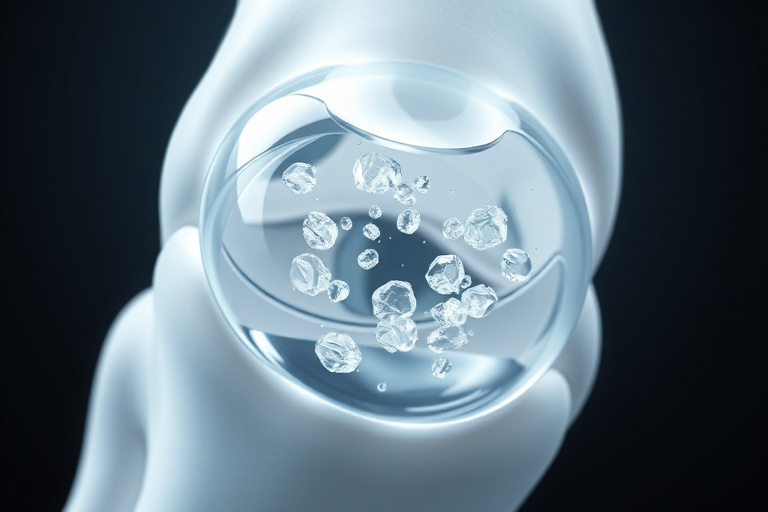Introduction: Understanding the Importance of Synovial Fluid and Hyaluronan for Joint Health
Joints are complex structures that facilitate movement and bear weight, enabling us to perform daily activities with ease. At the core of healthy joint function is synovial fluid, a viscous substance that lubricates and cushions the articulating surfaces within joints. This fluid ensures smooth movement and protects cartilage from excessive wear.
A critical component of synovial fluid is hyaluronan, also known as hyaluronic acid. This naturally occurring molecule plays a vital role in maintaining joint health by providing viscosity and shock absorption. As we explore how joint genesis hyaluronan supports joint function, it becomes clear that maintaining adequate levels of this substance is essential for pain relief and joint longevity.
What Is Hyaluronan and Why Is It Essential for Synovial Fluid?
Hyaluronan is a high-molecular-weight glycosaminoglycan composed of repeating disaccharide units. Its unique structure allows it to retain water effectively, contributing to the gel-like consistency of synovial fluid. This viscosity is crucial for the fluid’s ability to lubricate joint surfaces and distribute mechanical loads evenly.
With age or due to joint degeneration, the natural production of hyaluronan declines, leading to thinner, less effective synovial fluid. This reduction can compromise joint cushioning, increase friction, and accelerate cartilage deterioration, ultimately contributing to conditions such as osteoarthritis.
How Hyaluronan Supports Joint Lubrication and Reduces Friction
Hyaluronan enhances joint mobility primarily through its lubricating properties. By increasing the viscosity of synovial fluid, it creates a slippery environment that minimizes direct contact between cartilage surfaces during movement. This reduction in friction helps prevent wear and tear on joint tissues.
Research indicates that hyaluronan’s viscoelastic properties are fundamental to its role in load distribution and shock absorption. When hyaluronan levels are adequate, joints move more smoothly, and the risk of injury or inflammation diminishes.
The Connection Between Hyaluronan and Joint Pain Relief
Degraded or insufficient hyaluronan in the synovial fluid is often associated with increased joint pain and stiffness. Without enough of this lubricant, joints experience more friction, leading to inflammation and discomfort.
Hyaluronan’s anti-inflammatory effects further contribute to pain relief by reducing cytokine activity within the joint. Numerous scientific studies have demonstrated that supplementing with hyaluronic acid can improve joint comfort, especially in individuals with osteoarthritis, making it a valuable component of pain management strategies.
Methods to Support or Increase Hyaluronan in Synovial Fluid
There are several approaches to maintaining or enhancing hyaluronan levels within joints:
- Medical interventions: Hyaluronic acid injections, known as viscosupplementation, are commonly used to directly restore synovial fluid viscosity in affected joints.
- Oral hyaluronan supplements: These supplements are designed to support joint health from within. Evidence suggests that oral hyaluronan can be effective, especially when combined with other joint-supportive nutrients, and are generally safe when taken as directed.
- Lifestyle modifications: Regular low-impact exercise, maintaining a healthy weight, and avoiding joint overuse can promote natural hyaluronan production.
- Dietary factors: Consuming foods rich in omega-3 fatty acids, antioxidants, and nutrients like glucosamine and chondroitin may support overall joint health and hyaluronan synthesis.
Can Hyaluronan Support Help Prevent or Slow Joint Degeneration?
Clinical research indicates that hyaluronan support can play a role in managing osteoarthritis and potentially slowing degenerative changes in joint tissues. By maintaining adequate hyaluronan levels, it is possible to preserve cartilage integrity and improve joint function.
However, early intervention is key. Once significant cartilage loss has occurred, restoring joint health becomes more challenging. Therefore, proactive measures, including hyaluronan support, are advisable to help prevent or delay the progression of degenerative joint disease.
Comparing Natural Support, Supplements, and Medical Treatments
Different strategies exist for supporting hyaluronan levels:
- Natural support: Lifestyle and dietary modifications can promote endogenous hyaluronan production.
- Supplements: Hyaluronan supplements offer a convenient way to boost joint support, with evidence suggesting benefits for pain relief and mobility.
- Medical treatments: Injections of hyaluronic acid provide targeted, immediate relief for severe cases but involve medical procedures and costs.
Choosing the appropriate approach depends on individual needs, severity of symptoms, and consultation with healthcare professionals. Integrating supplements like Joint Genesis can be part of a comprehensive joint health plan.
Scientific Evidence on Hyaluronan Support for Long-term Joint Health
Numerous studies and reviews support the use of hyaluronan for improving joint function and reducing pain, especially in osteoarthritis management. While expectations should be realistic—hyaluronan support is not a cure—it can significantly enhance quality of life when combined with other therapies.
Ongoing research continues to explore new formulations and delivery methods, promising future advancements in joint health treatments and degenerative joint disease prevention.
Final Thoughts: Enhancing Synovial Fluid for Better Joint Comfort and Mobility
Supporting your joint health through measures that promote healthy synovial fluid and hyaluronan levels is a practical step toward reducing pain and maintaining mobility. Regular exercise, a balanced diet, and appropriate supplementation can make a meaningful difference.
However, it is essential to consult healthcare professionals to develop personalized strategies tailored to your specific condition. Proactive management of joint health can help you enjoy greater comfort and an active lifestyle well into later years.




